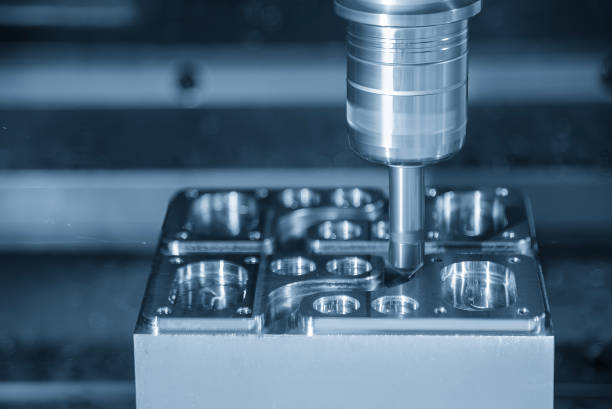

CNC (Computer Numerical Control) milling, a process that involves removing material from a workpiece to create a desired shape, can become more environmentally friendly through various strategies aimed at reducing energy consumption, minimizing waste, and using sustainable materials. Here are some ways to achieve this:
- Efficient Machinery : Use CNC machines that are energy-efficient, with advanced motors and drives that consume less power. Regular maintenance also ensures machines operate at optimal efficiency.
- Smart Scheduling : Optimize machine use by scheduling operations to reduce idle times, thus minimizing energy waste. Implementing automated power-down features during inactivity can also help.
- Energy Recovery Systems : Some advanced CNC machines are equipped with systems that recover and reuse energy, such as regenerative braking systems in spindles.
- Precision Machining : Improve programming and toolpath optimization to minimize material removal, reducing the amount of waste produced.
- Near-Net-Shaping Techniques : Use processes that bring the workpiece closer to its final shape before CNC milling, such as additive manufacturing or forging, to reduce the amount of material that needs to be milled away.
- Recycling and Reusing Materials : Implement processes to collect and recycle scrap material. Some materials can be reprocessed or reused in the manufacturing process.
- Eco-Friendly Coolants and Lubricants : Replace traditional coolants with biodegradable or non-toxic alternatives, reducing the environmental impact of chemical waste.
- Sustainable Material Sourcing : Use materials that are sourced sustainably or are recyclable. This includes using metals like aluminum or steel that have high recyclability or choosing bioplastics for certain applications.
- Additive Manufacturing Integration : Combine CNC milling with additive manufacturing (3D printing) to reduce material waste by building up parts rather than removing excess material.
- Digital Twins and Simulation : Use digital twin technology to simulate and optimize CNC processes before actual machining, reducing trial-and-error waste.
- Lean Manufacturing Principles : Apply lean manufacturing principles to minimize waste, streamline operations, and reduce the environmental impact of production processes.
- Renewable Energy : Power CNC milling machines with renewable energy sources like solar, wind, or hydroelectric power. Some facilities may even install their own renewable energy systems.
- Energy-Efficient Facility Design : Design manufacturing facilities to be energy-efficient, with features like energy-efficient lighting, HVAC systems, and building insulation.
- High-Efficiency Tooling : Use high-efficiency cutting tools that last longer and require less frequent replacement, reducing waste.
- Toolpath Optimization : Continuously improve and optimize toolpaths to reduce machining time, energy consumption, and tool wear.
- Chip Recycling : Implement systems to collect and recycle metal chips and other byproducts of the milling process. Chips can often be re-melted and reused.
- Coolant Filtration and Reuse : Use filtration systems to clean and reuse coolants and lubricants, reducing chemical waste and disposal costs.
- Training Programs : Educate employees on sustainable manufacturing practices, including energy-saving measures, material conservation, and proper waste disposal.
- Continuous Improvement Programs : Encourage a culture of continuous improvement focused on reducing environmental impact, where employees are motivated to find new ways to make the milling process greener.
By integrating these strategies, CNC milling can become a more environmentally friendly process, contributing to overall sustainability in manufacturing.
SHARE THIS ARTICLE
RST Engineering Limited
Unit 1 Youngs Industrial Estate
Stanbridge Road
Leighton Buzzard
Bedfordshire
LU7 4QB

COPYRIGHT © RST Engineering Ltd. 2024 ALL RIGHTS RESERVED.
Privacy Policy | Terms & Conditions | Sitemap
Site designed & built by CO-LAB

